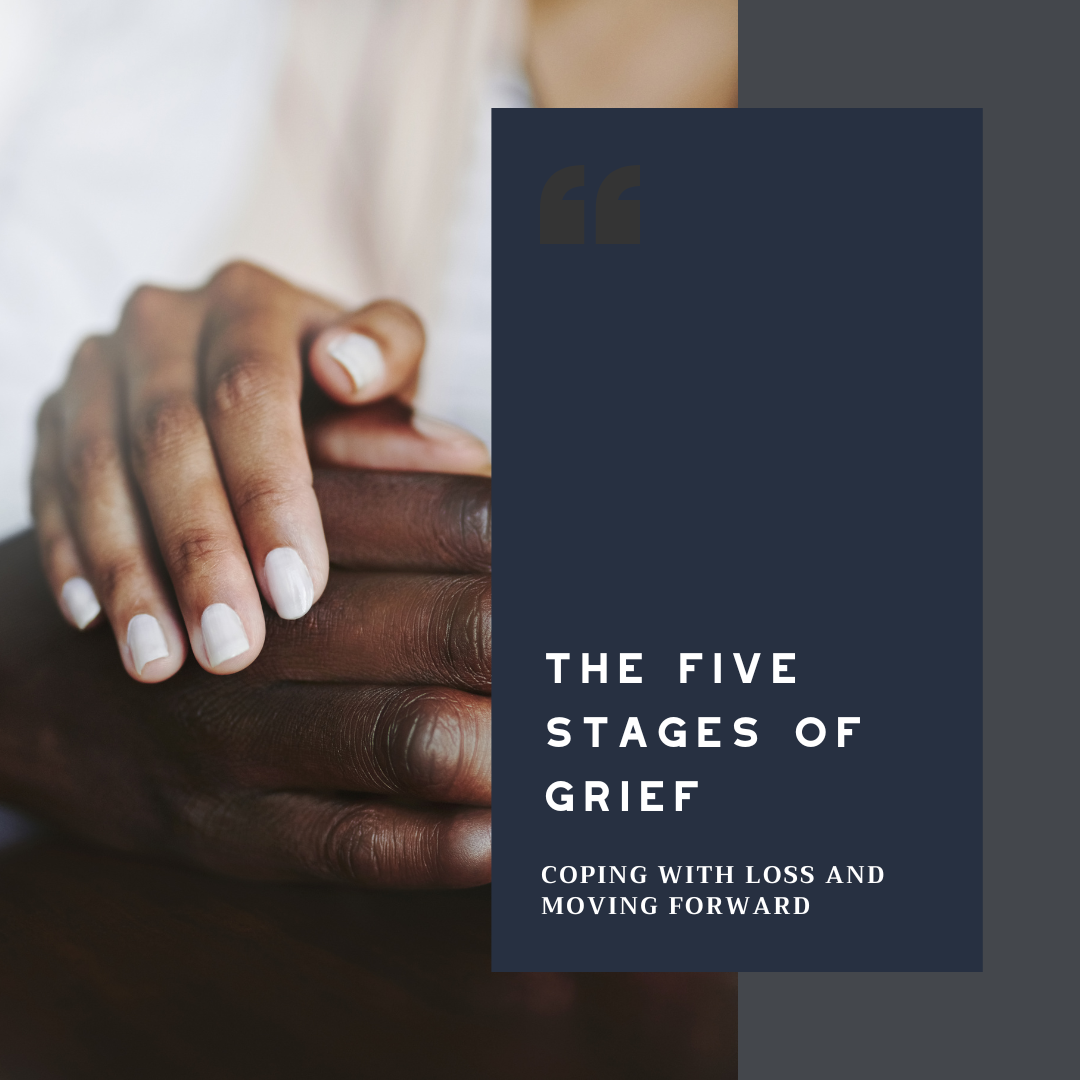What Is Good Grief?
Grief is hard, but can it be good? In this blog post, we walk through what it means to grieve – and how to grieve with hope.
Grief takes many forms. A death of a loved one. Losing a friendship. Leaving a job. No matter why we grieve, grief is a natural physiological process that every human being will experience in their lifetime.
“To love at all is to be vulnerable. Love anything and your heart will be wrung and possibly broken. If you want to make sure of keeping it intact, you must give it to no one, not even an animal.”
― C.S. Lewis, The Four Loves

As C.S. Lewis says, to love at all is to be vulnerable. If you love something or someone, you will experience grief at some point. Just because it’s a universal experience, though, doesn’t mean it’s easy to travel through. We all experience the aches of grief, and we all search for ways to escape, heal, or make the pain go away.
The 5 Stages of Grief
Grief is an acute pain accompanying a loss. People tend to travel through grief in five stages, a model first developed by Elisabeth Kübler-Ross in her famous book On Death and Dying:
1. Denial & shock: When we can’t comprehend the reality of our loss, resulting in feeling numb, isolating ourselves, or carrying on with our life as if nothing happened.
2. Bargaining: When we try to make deals in an attempt to regain what we have lost.
3. Anger: When we feel intense frustration and resentment towards ourselves or who we have lost.
4. Depression: When we feel the full weight and sadness of our loss.
5. Acceptance: When we come to terms with our loss.
Despite these stages, there’s no right or wrong way to feel or process your grief. The reality is that grief is non-linear. We learn to live with the grief, and over time the impact of it isn’t as strong. Sometimes we see it or feel it stronger than other times, but deep down we have accepted it.
Many writers have described grief as a wave that crashes in, goes back out, then comes back in again. It’s up to us to learn how to deal with those waves – how to swim through the grief without drowning.
The good news: You don’t have to do it alone.
The even better news: You can grieve with hope.
To understand how, we’re going to define what it means to have Good Grief.

What is good grief?
The word “good” means something that is respectable and virtuous. It makes something better. This is true, but it’s not the only definition.
Something is also “good” if it has all the properties it’s supposed to have. In other words, it fulfills its definition. For example, a car is good if it gets you from point A to point B. A thief is good if it robs a house without getting caught. The car and thief are congruent with their definition.
In a similar vein, “good” grief is when you accept that you’re grieving, and you’re self-aware about the process as you swim through it. Swimming through it might mean crying. It might mean being angry. It might mean saying “if only.” Experiencing these moments — sadness, anger, bargaining — isn’t “bad” grief. It’s good because it’s congruent with the definition of grief. At the end, you have acceptance. And at every stage, you can have hope.

How to Find Hope In Grief
In her book On Death and Dying, Kübler-Ross acknowledged the role of hope throughout every stage of grief. While grief looks different for everyone, we all share a common search for meaning and joy even during the grieving process.
Christians look to Jesus for this hope.
“We do not want you to be uninformed, brothers, about those who are asleep, that you may not grieve as others do who have no hope. For since we believe that Jesus died and rose again, even so, through Jesus, God will bring with him those who have fallen asleep.”
– 1 Thessalonians 4:13-14 ESV
Yes, we grieve, but not without hope. The greatest way to swim through life's challenge and grief is to put your hope and trust in Jesus. This hope is rooted in the death and resurrection of Jesus Christ, and the promise of life beyond the grave through faith in Him.
To experience this same hope for yourself, all you need to do is believe in your heart and confess with your mouth that Jesus Christ is Lord.
Why believe in Jesus? What does it mean to be saved? What do we need saving from? For those swimming through grief, the brokenness of this world is painfully evident. But this was not God’s perfect design! When man chose to sin, disease, disaster, and death entered the world. However, this is not the end of the story.
God knows your grief, and He has done something about it. He sent his Son Jesus to live a perfect and sinless life in this broken world. Even though Jesus lived a perfect life, he was killed on the cross so that our sin could be forgiven. This isn’t the end of the story, either. Jesus was buried and on the third day he rose again, defeating sin and death.
“For the wages of sin is death, but the free gift of God is eternal life in Christ Jesus our Lord.” – Romans 6:23 ESV
God offers us eternal life through Jesus' sacrifice in our place. All you have to do is believe. To learn more about what this means and how to be saved, please read more on the gospel page of our website.
Final Thoughts on Grief & Hope
Grief is never easy, but it’s also never hopeless.
Seasons of denial, bargaining, anger, and sadness are all completely normal and natural responses to loss. “Good” grief means you’re allowing yourself to experience all of these things. But remember, you don’t have to go through these stages alone.
It’s okay to ask for support. Sometimes we need a friend. Other times we need a pastor. Sometimes we need a counselor, a doctor, or both. All the time, we need the faith, hope, and love found through Jesus.
If there's anything that we can do to support you in your journey and in this chapter of life, please don't hesitate to reach out. You’re not in this alone!
This is part 1 of a series on Good Grief. Read part 2 here.


